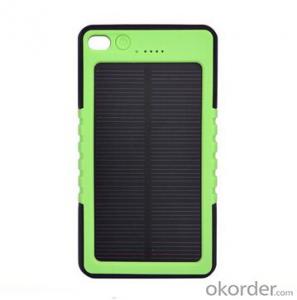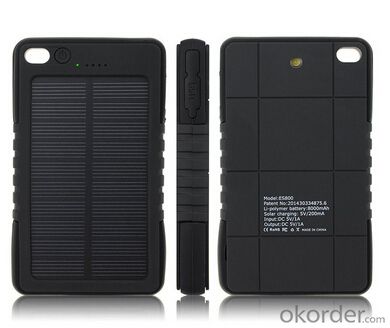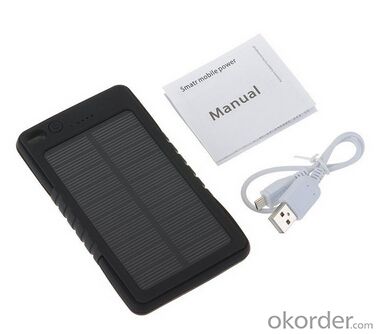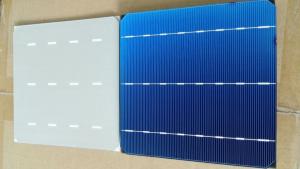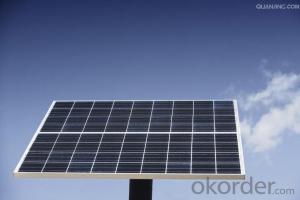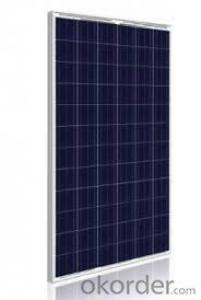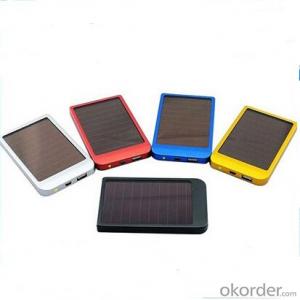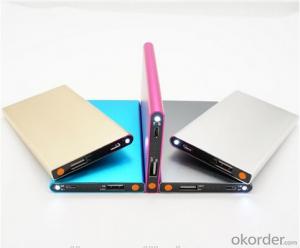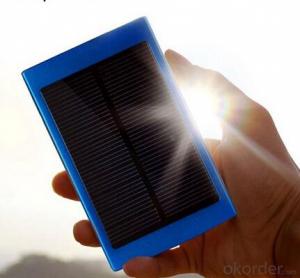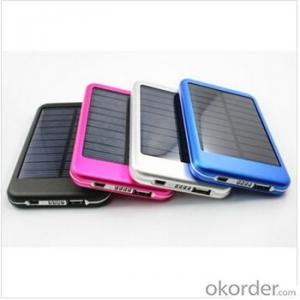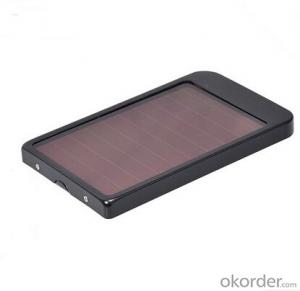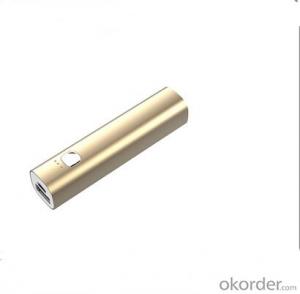Tesla Solar Cells Powered Portable Mobile Phone Solar Charger for 12000mAh Mobile
- Loading Port:
- Shanghai
- Payment Terms:
- TT OR LC
- Min Order Qty:
- 300 pc
- Supply Capability:
- 50000 pc/month
OKorder Service Pledge
OKorder Financial Service
You Might Also Like
Solar Charger Description
With built-in high-capacity lithium-polymer rechargeable batteries, The solar power bank can recharge your Tablet ,mobile phones, digital cameras, PDA, MP3, MP4 and other digital products anywhere and anytime. With standard Micro USB and variety of converters configuration, its appearance small and compact aluminum alley design, make you easy to carry, show your elegance and fashion.
Features:
material:ABS+silicone
solar pannel: 5V 240mA
polymer battery capacity:8000mAh-10000mAh
Micro USB input: 5V 1A
USB output: 5V/1A and 5V/2A
built-in battery charging time:about 13h
if charge by PC USB,it will take about 3, Led will change to red when charging,and LED will be off after charging
it will take about 8-10h for full charging after strong sun, pls charge the charger before you charge to other mobile phone and digital products
LED will turn to green when using solar charger to charge mobile phone and other digital device,LED will be off when battery is full
Applied range:suite for iPhone,iPads,Samsung and other smartphone,other tablet pc, iPod,Mp3/4,digital camera,
use inteligent chip,support over charging/discharging/overloading/short-circuit protection
Type | solar power bank |
Capacity | 12000mAh |
Dimension | 132x74x16mm |
Color | Black White Green Blue Redor customized |
Weight | 180g |
Input | DC 5V 1A |
Output | DC 5V 1A |
Power efficiency | 90% |
Operating temperature | -10°C-40°C |
Storage temperature | -20°C-50°C |
Safety protection | OVP ,ODP ,OCP ,SCP |
Warranty | One year |
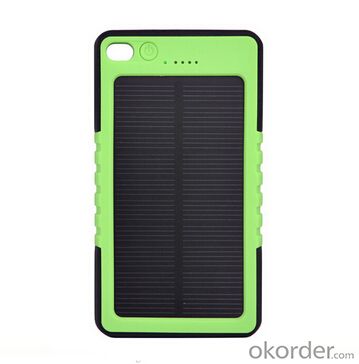
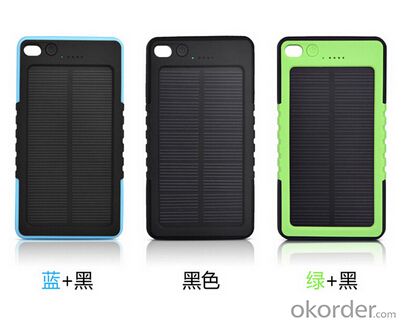
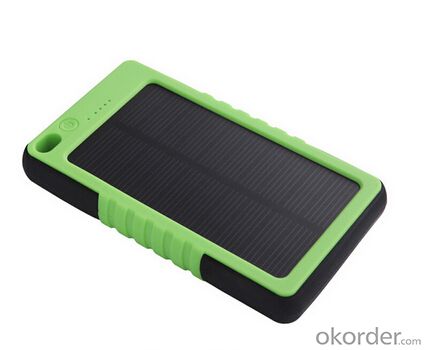
FAQ
1, What’s price per product ?
A: It’s depends on the quantity, delivery date and payment terms of the order. We can talk further about the detail price issue. Our products is high quality with lower price level.
2, How to make payment?
We accept T/T or L/C.
3, What is your lead time?
Generally 1-3 weeks depends on the order quantity and your specific requirements.
4, Can you do OEM for us?
Yes, we can.
5, How do you pack your products?
We have rich experience on how to pack the panels to make sure the safety on shipment when it arrives at the destination.
- Q: Can solar cells be used for powering electric water heaters?
- Yes, solar cells can be used to power electric water heaters. By converting sunlight into electricity, solar cells can provide a sustainable and renewable source of energy to heat water in electric water heaters. This helps reduce reliance on traditional grid electricity and lowers carbon emissions.
- Q: How do solar cells impact energy independence?
- Solar cells impact energy independence by harnessing the power of the sun to generate electricity, reducing reliance on traditional fossil fuels. By providing a clean and renewable source of energy, solar cells contribute to reducing greenhouse gas emissions and increasing energy self-sufficiency, ultimately enhancing a country's energy independence.
- Q: Can solar cells be used to power large-scale industrial facilities?
- Yes, solar cells can indeed be used to power large-scale industrial facilities. With advancements in solar technology and the availability of more efficient and cost-effective solar panels, industrial facilities can harness the power of the sun to meet their energy needs. Large-scale solar installations, such as solar farms or rooftop arrays, can generate substantial amounts of electricity, making them a viable option for powering industrial operations. Additionally, integrating solar power into industrial facilities can reduce greenhouse gas emissions, lower energy costs, and provide a more sustainable and reliable energy source.
- Q: Can solar cells be used in public transportation systems?
- Yes, solar cells can be used in public transportation systems. They can be installed on the roofs of buses, trains, and trams to generate electricity from sunlight, which can be used to power various systems such as lighting, air conditioning, and onboard electronics. This helps reduce reliance on fossil fuels and lowers the carbon footprint of public transportation. Additionally, solar cells can also be integrated into bus shelters and charging stations to provide clean energy for electric buses and other vehicles.
- Q: How are solar cells manufactured?
- Solar cells are manufactured through a process that involves several steps. First, raw materials such as silicon, which is the main component of solar cells, are purified and shaped into cylindrical ingots. These ingots are then sliced into thin wafers. Next, the wafers are treated with various chemicals to create a p-n junction, which is essential for the conversion of sunlight into electricity. This involves applying a layer of phosphorus to one side of the wafer, which creates the n-type layer, and a layer of boron to the other side, creating the p-type layer. Afterwards, the wafers are coated with an anti-reflective material to increase their efficiency in capturing sunlight. Metal contacts are then added to both sides of the wafer to collect the generated electricity. Finally, the wafers are assembled into modules or panels, where they are protected with a glass cover and encapsulated with a weather-resistant backsheet. These modules are then tested for quality assurance before they are ready for installation and use in solar energy systems.
- Q: Can solar cells be used in swimming pool heating?
- Yes, solar cells can be used in swimming pool heating. Solar cells, also known as photovoltaic cells, can capture sunlight and convert it into electricity. This electricity can then be used to power heating systems for swimming pools, allowing for a more sustainable and cost-effective way to heat the pool water.
- Q: Can solar cells be used in educational institutions?
- Yes, solar cells can be used in educational institutions. They offer a hands-on approach to teaching students about renewable energy and the importance of sustainable practices. By installing solar panels on rooftops or in designated areas, educational institutions can generate clean energy, reduce their carbon footprint, and save on electricity costs. Additionally, incorporating solar cells into the curriculum allows students to understand the science, technology, and environmental aspects of solar energy, fostering a greater awareness and understanding of renewable energy sources.
- Q: What materials are used in solar cells?
- The most common materials used in solar cells are silicon, which is the primary component, along with other materials like metal conductors, glass, and polymers.
- Q: Can solar cells be used for powering electric gates?
- Yes, solar cells can be used to power electric gates. Solar cells convert sunlight into electricity, which can be stored in batteries or directly used to power various devices. By installing solar panels near the gate, the generated electricity can be utilized to operate and control electric gates, providing a sustainable and reliable source of power.
- Q: Can solar cells be used in healthcare facilities?
- Yes, solar cells can be used in healthcare facilities. They can help power various equipment and devices, such as lighting, ventilation systems, and medical equipment, reducing reliance on traditional energy sources and lowering operational costs. Additionally, solar power can be utilized in remote and off-grid healthcare facilities, ensuring access to clean and sustainable energy for essential healthcare services.
Send your message to us
Tesla Solar Cells Powered Portable Mobile Phone Solar Charger for 12000mAh Mobile
- Loading Port:
- Shanghai
- Payment Terms:
- TT OR LC
- Min Order Qty:
- 300 pc
- Supply Capability:
- 50000 pc/month
OKorder Service Pledge
OKorder Financial Service
Similar products
Hot products
Hot Searches
Related keywords
